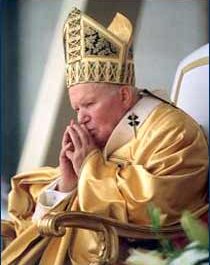

|
|
| Musical Musings: CNP Feedback |
CNP Feedback - Glory & PraiseThe "Feedback Box" on the CanticaNOVA Publications website has proven quite effective in promoting communications on a variety of subjects, and expressing concerns of liturgists and musicians. From time to time, we'll compile a few of these questions or comments and put them in public view, with the hope that others with similar concerns may benefit from their content.
Q. Dear CNP:
A. Dear Soaring:
As you mention, there are many songs that evoke deep emotional and spiritual feelings in you, in me, and in others. They run the gamut from the purely secular ("You'll Never Walk Alone") to the religious ("I Believe in the Sun"). The ability of these songs to impact our hearts and uplift our spirits is never in question. If songs like these, or perhaps "Like A Sunflower," offer you solace and comfort in your life, then by all means they should be a part of your listening (or singing). Carey Landry, who wrote both songs you mentioned, has CDs available and these would make good material for your meditation or private prayer. They are not appropriate for corporate worship (that is, sacred liturgy) for reasons that I'll outline below.
1. Sacred liturgical music must have a link to the continuing traditions of the Catholic Church.The Church was instituted by Christ to carry on his mission after his return to the Father. The Church's mandate is to preserve the essentials of the Gospel message through Scripture and Tradition. Tradition (what has been handed on from earliest times and continues to be promulgated today) is the foundation of her teaching. The Church is not static, but evolves and grows by building on this Tradition — nowhere is there a breach or break, but always a gradual development based on what has come before.This is no less true of church music than it is of theology. Many popes have spoken on this subject. Here I'll quote only the last two:
The late Pope John Paul II writes in his Chirograph for the Centenary of the Motu proprio Tra le sollecitudini on Sacred Music (2003):
#12. With regard to compositions of liturgical music, I make my own the "general rule" that Saint Pius X formulated in these words: "The more closely a composition for church approaches in its movement, inspiration and savor the Gregorian melodic form, the more sacred and liturgical it becomes; and the more out of harmony it is with that supreme model, the less worthy it is of the temple." It is not, of course, a question of imitating Gregorian chant but rather of ensuring that new compositions are imbued with the same spirit that inspired and little by little came to shape it. Only an artist who is profoundly steeped in the sensus Ecclesiæ can attempt to perceive and express in melody the truth of the Mystery that is celebrated in the Liturgy. In this perspective, in my Letter to Artists I wrote: "How many sacred works have been composed through the centuries by people deeply imbued with the sense of mystery! The faith of countless believers has been nourished by melodies flowing from the hearts of other believers, either introduced into the Liturgy or used as an aid to dignified worship. In song, faith is experienced as vibrant joy, love and confident expectation of the saving intervention of God."In his book, A New Song for the Lord, Pope Benedict XVI (as Cardinal Ratzinger) writes in Chapter 7: Our Incarnate Lord, who was raised up on the cross, raised up our fallen human nature. Western music, from Gregorian chant through Renaissance polyphony to Bruckner and beyond, lives from this great synthesis of spirit, intuition and sensuous sound. The liturgical music of the Church must be subject to that integration of the human state which appears before us in incarnational faith.While we as composers are not called to "rewrite" Gregorian chant, we are asked to model our current music on chant, in its appropriate style and profundity of text. Unfortunately, much of the music and lyrics in Glory & Praise are neither appropriate styles nor profound texts. Examples:
2. Texts should be orthodox and approved.Specifically looking at texts, we can see just how far afield church musicians in the U.S. have come from what the Church asks of us. Every Sunday, every solemnity, every feast, in fact every day in the Liturgical Year has texts that are specified for use during these points in the Mass:
For example, on the 19th Sunday in Ordinary Time, these are the texts that we should be singing:
I am convinced it is a rare parish that actually sings these prescribed texts at the appropriate times. Rather, we take a low-priority alternative, allowable but not ideal, of substituting hymns or songs that usually have no relation whatever to the proper texts.
|
